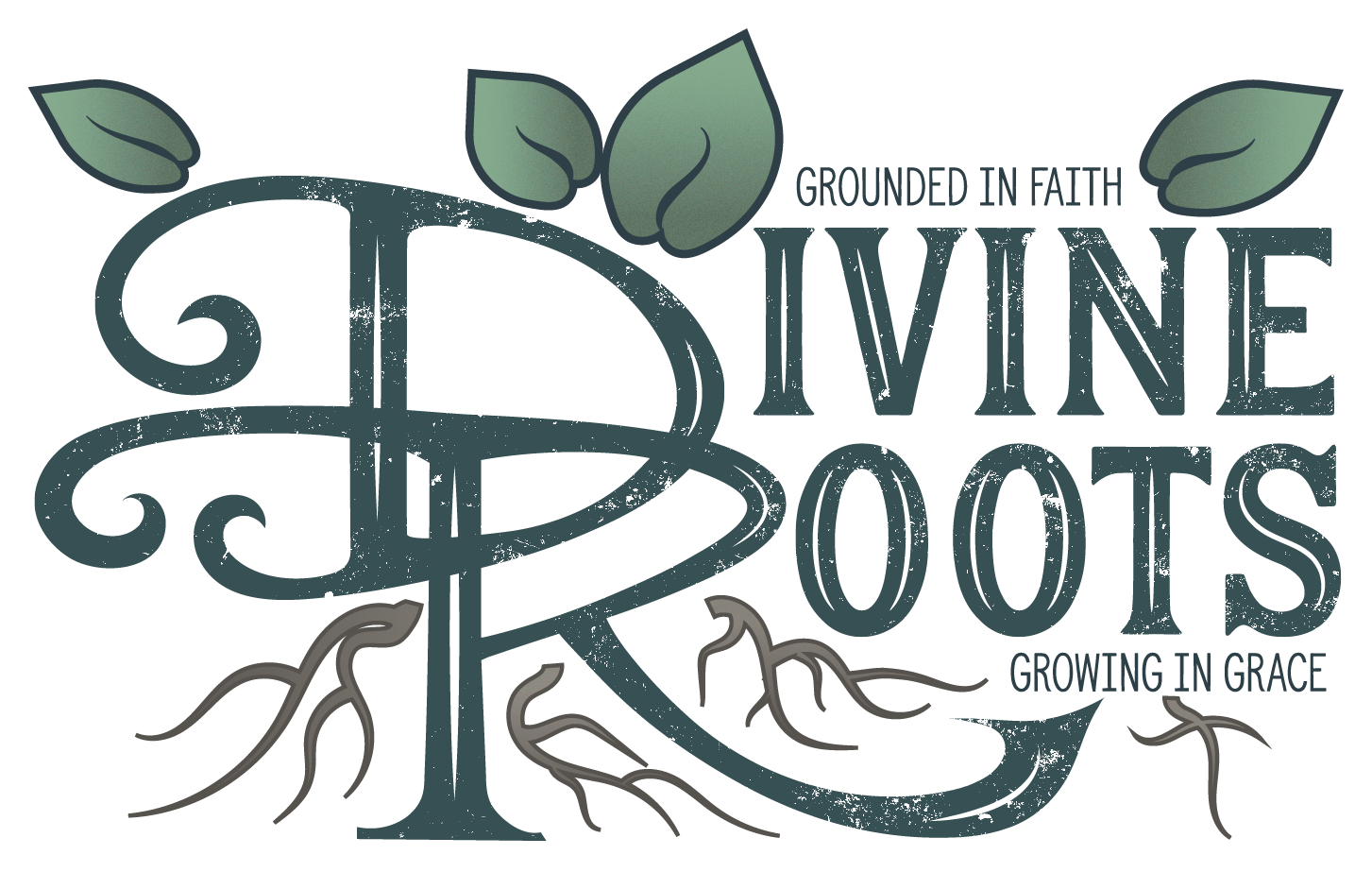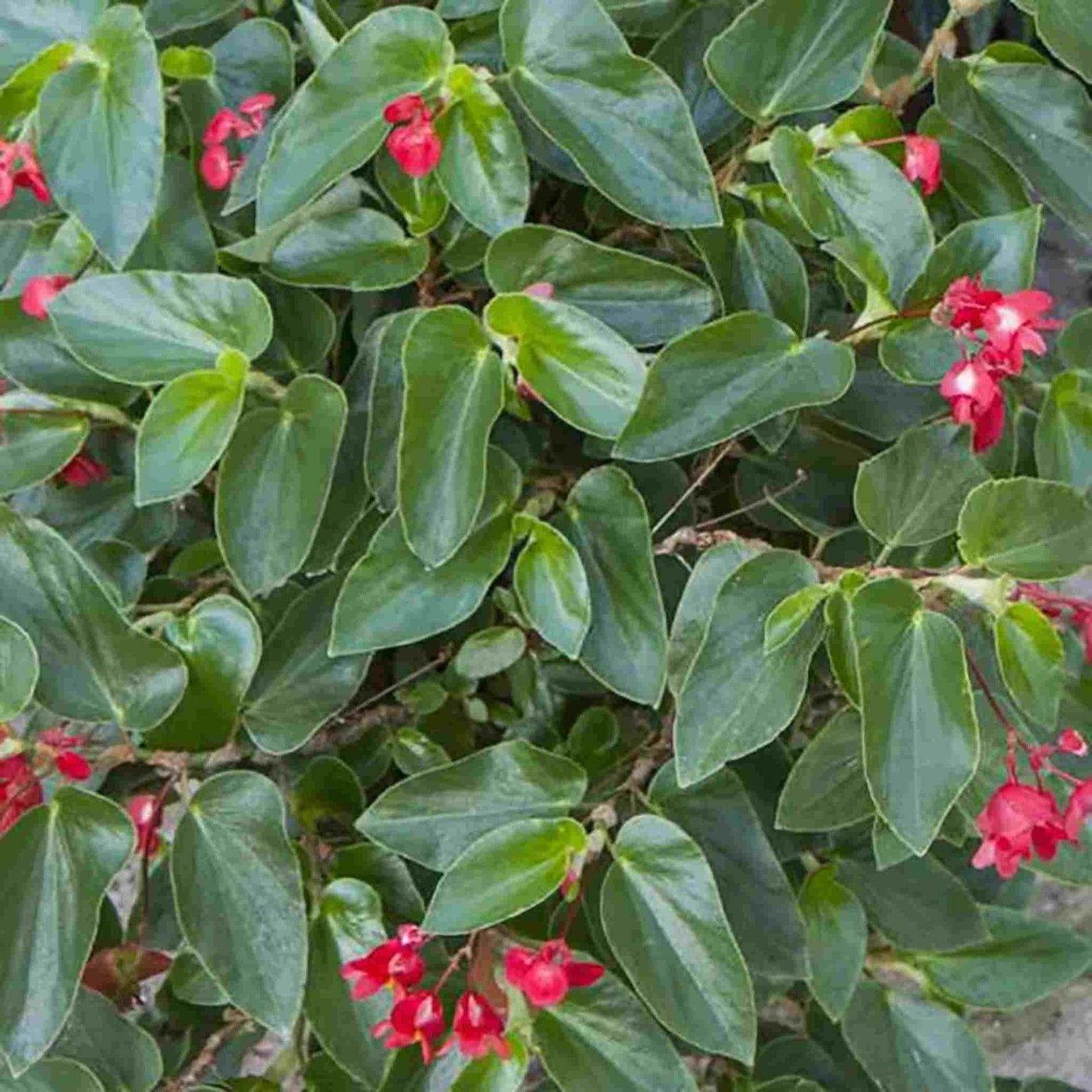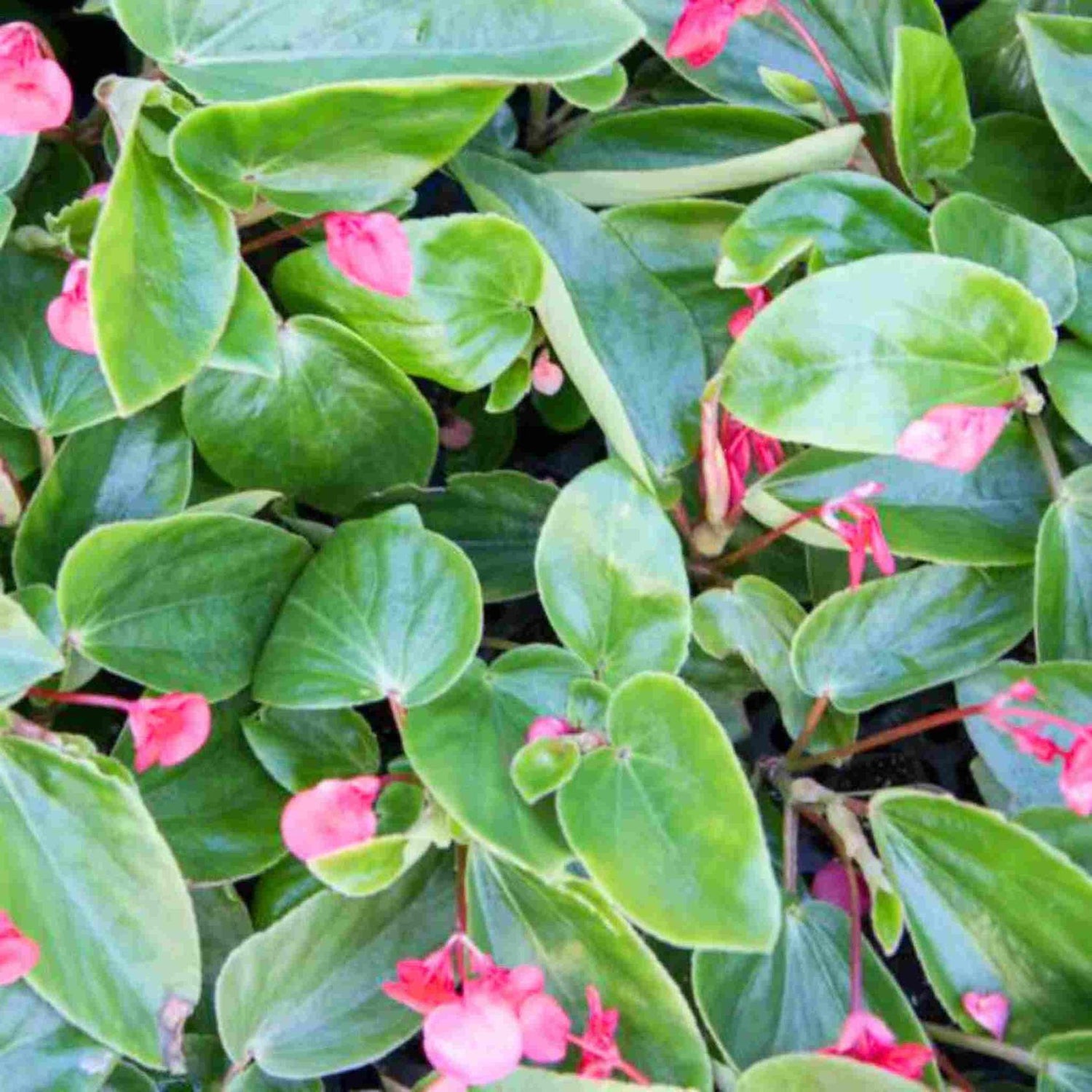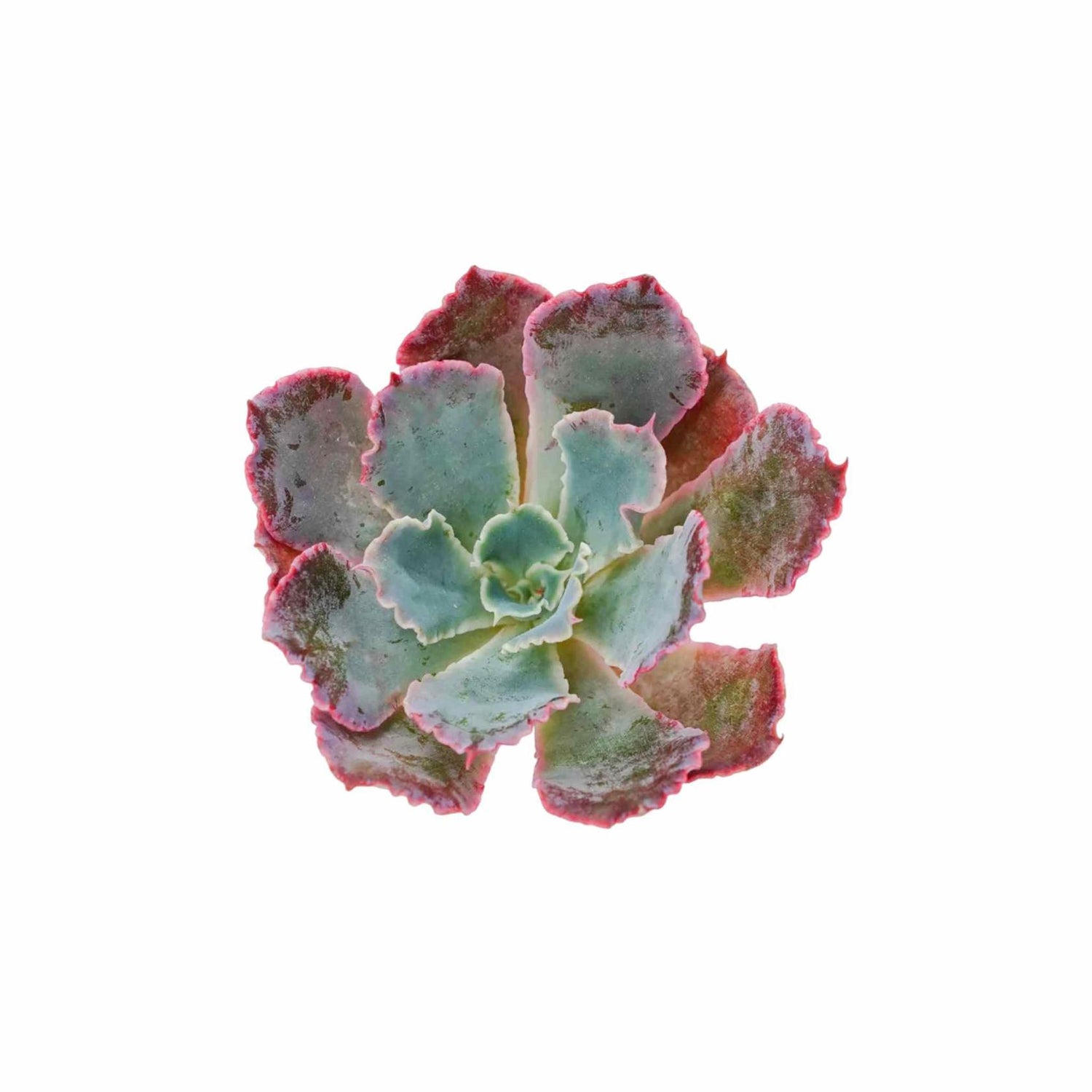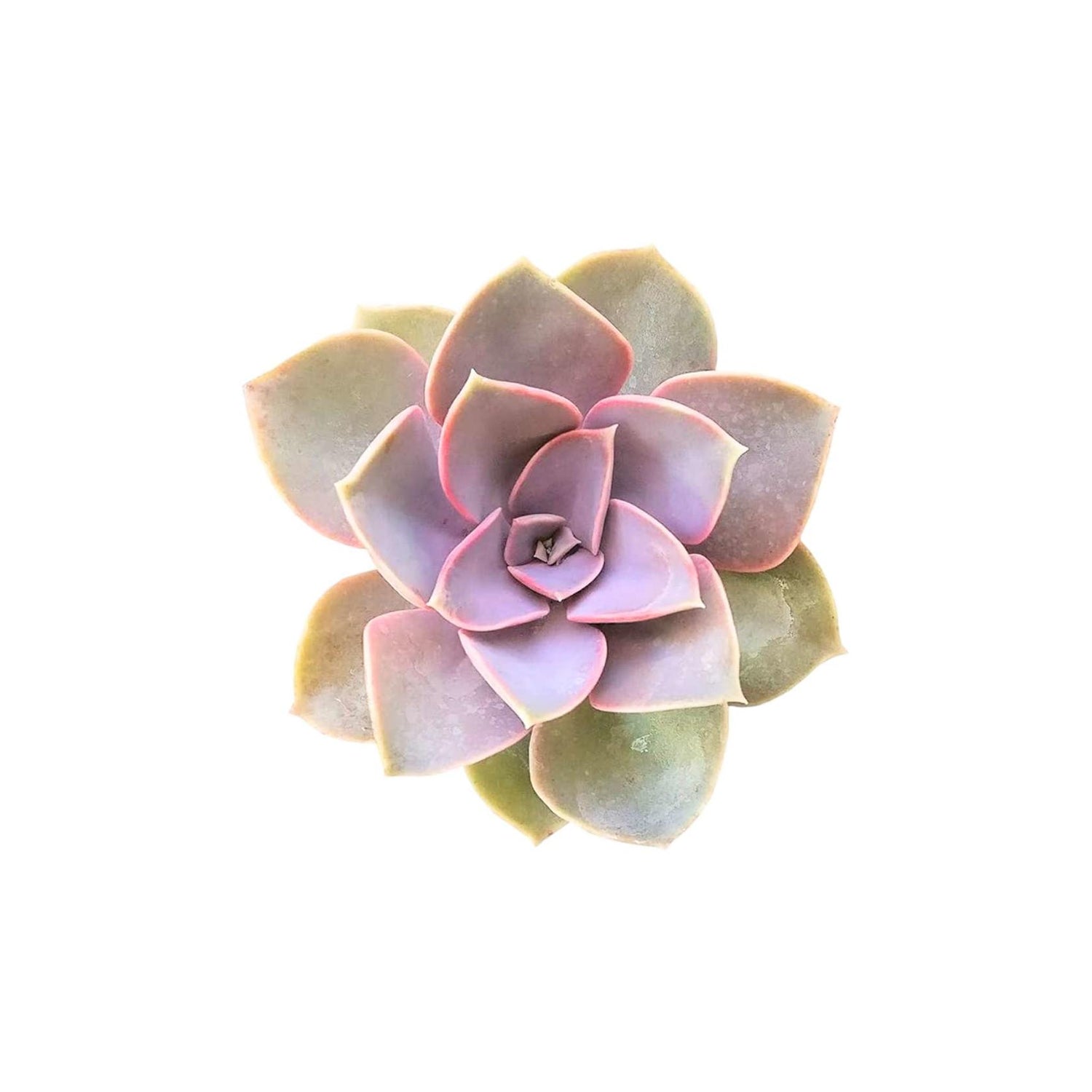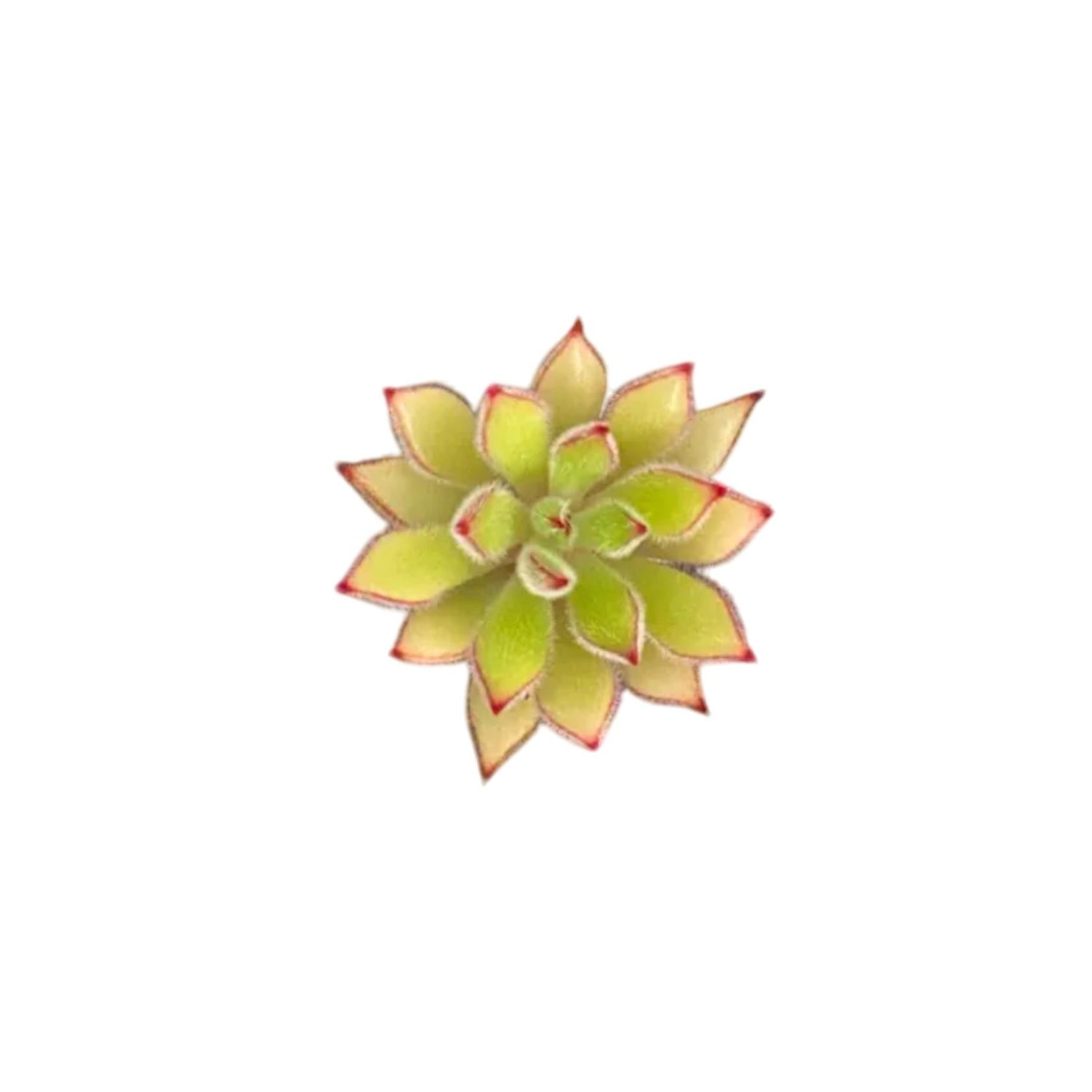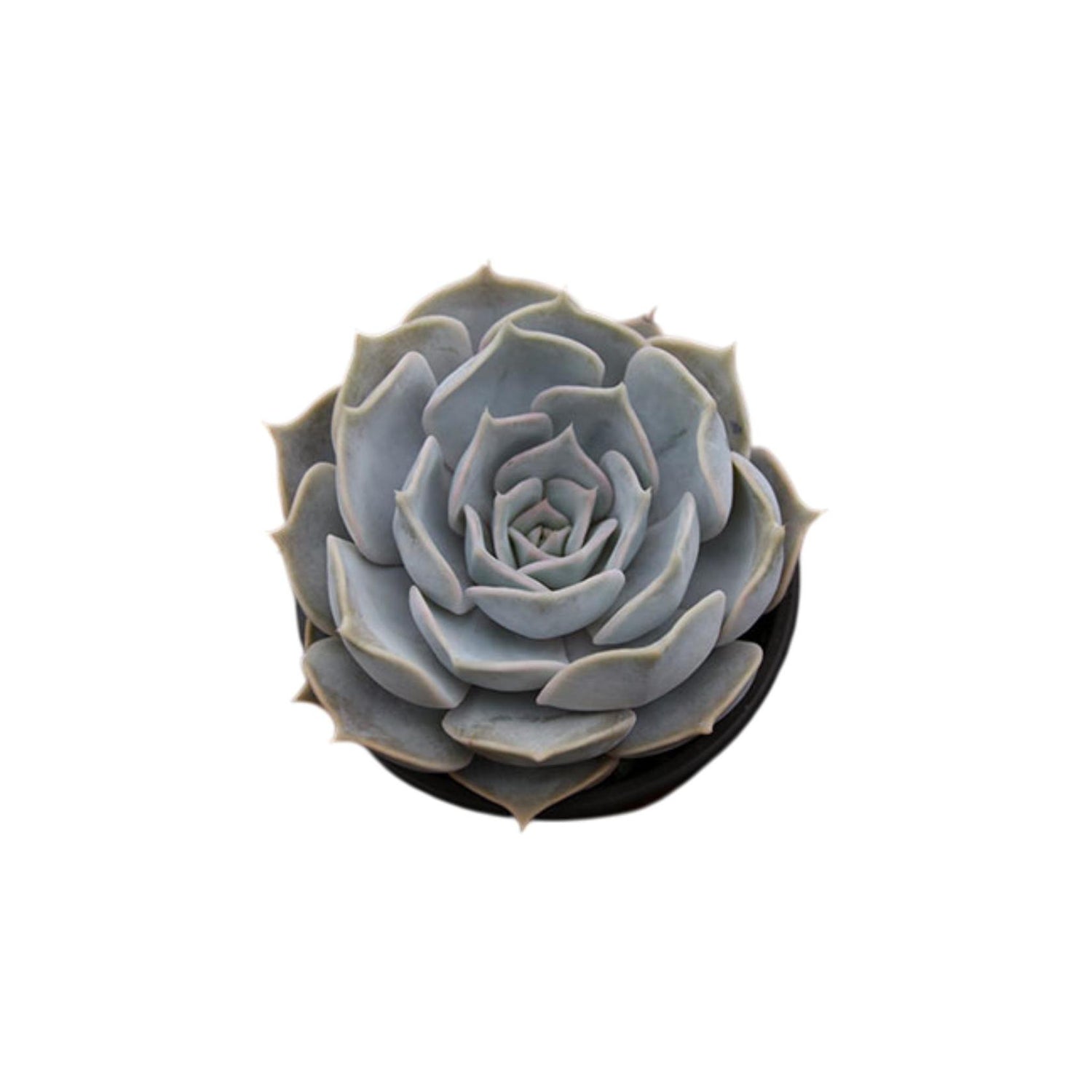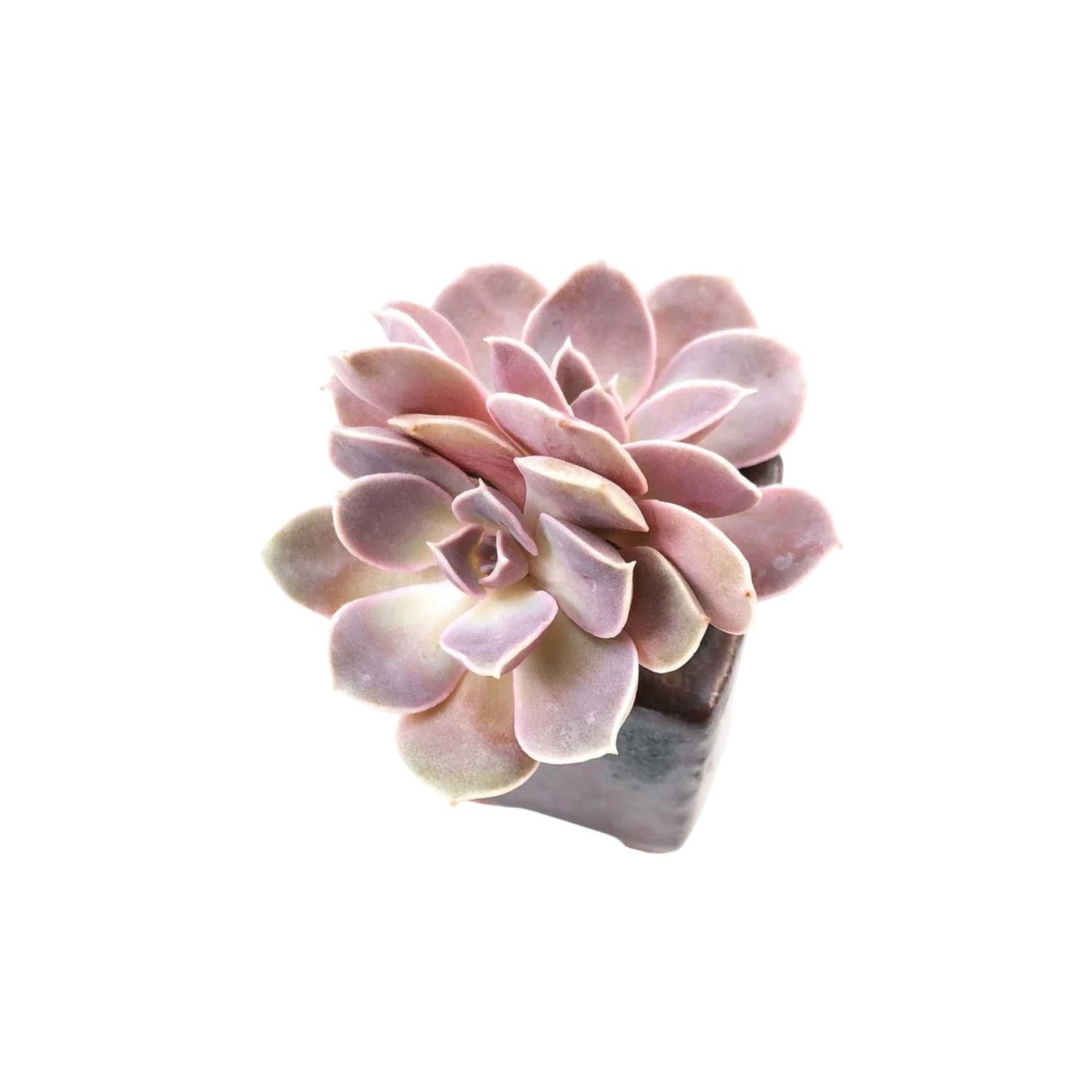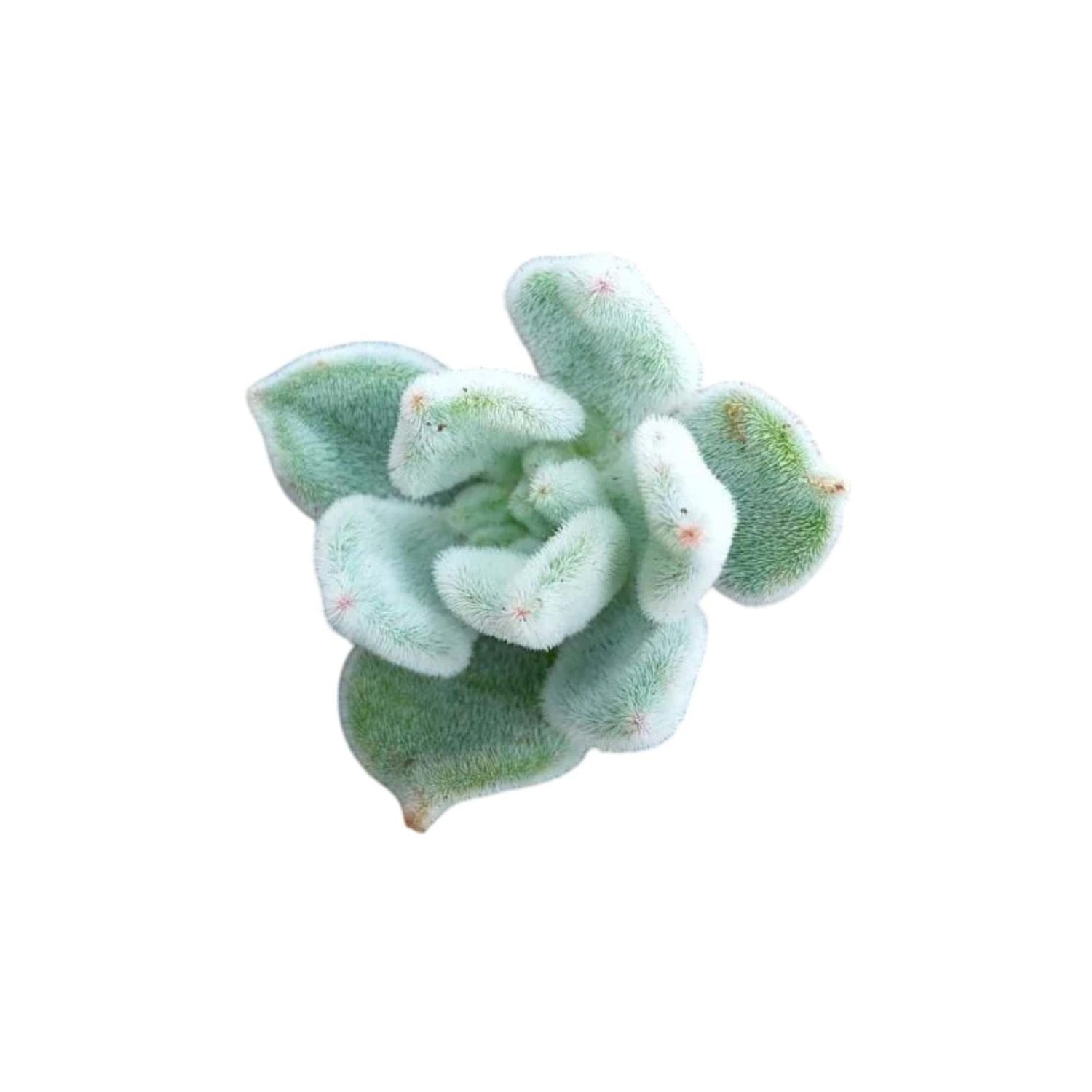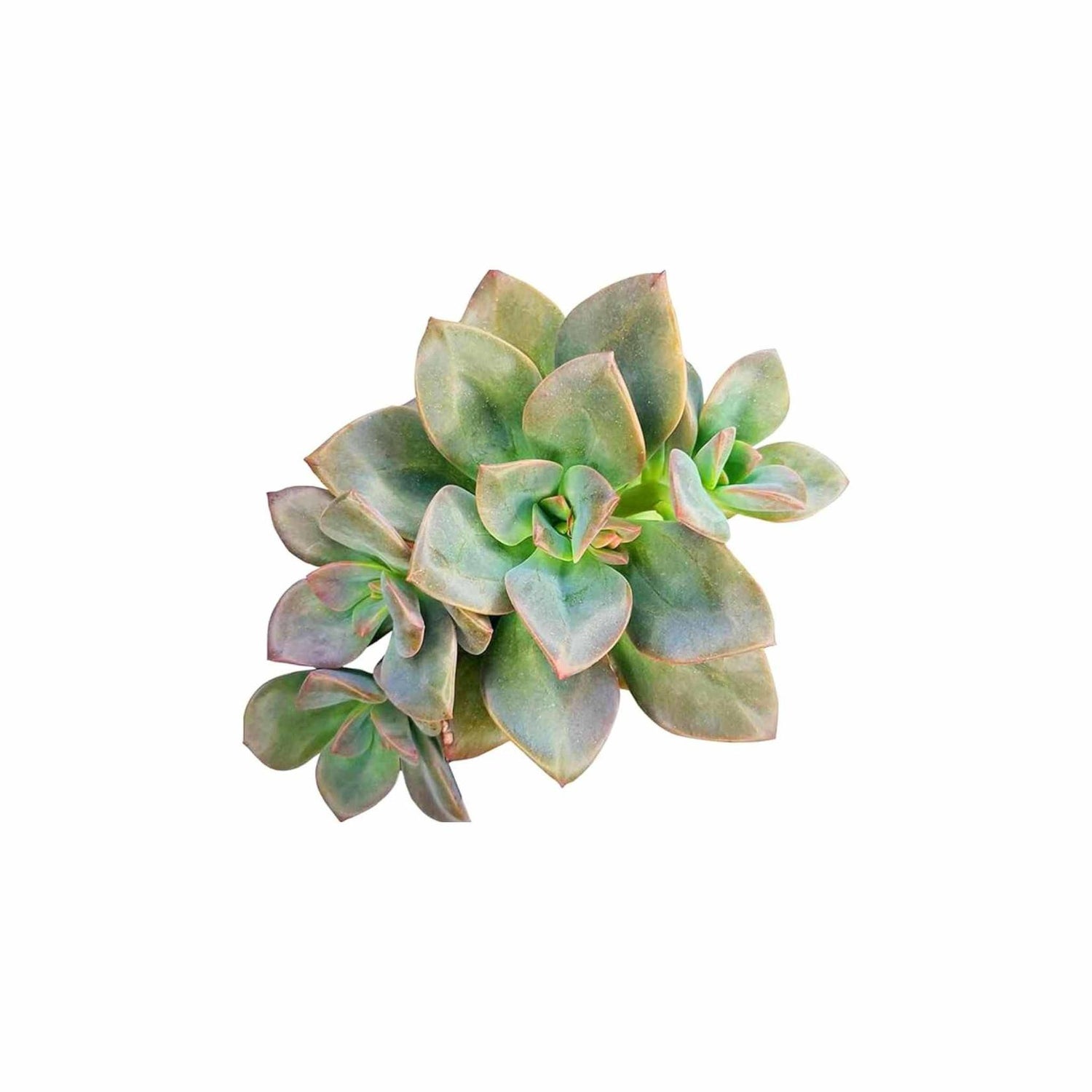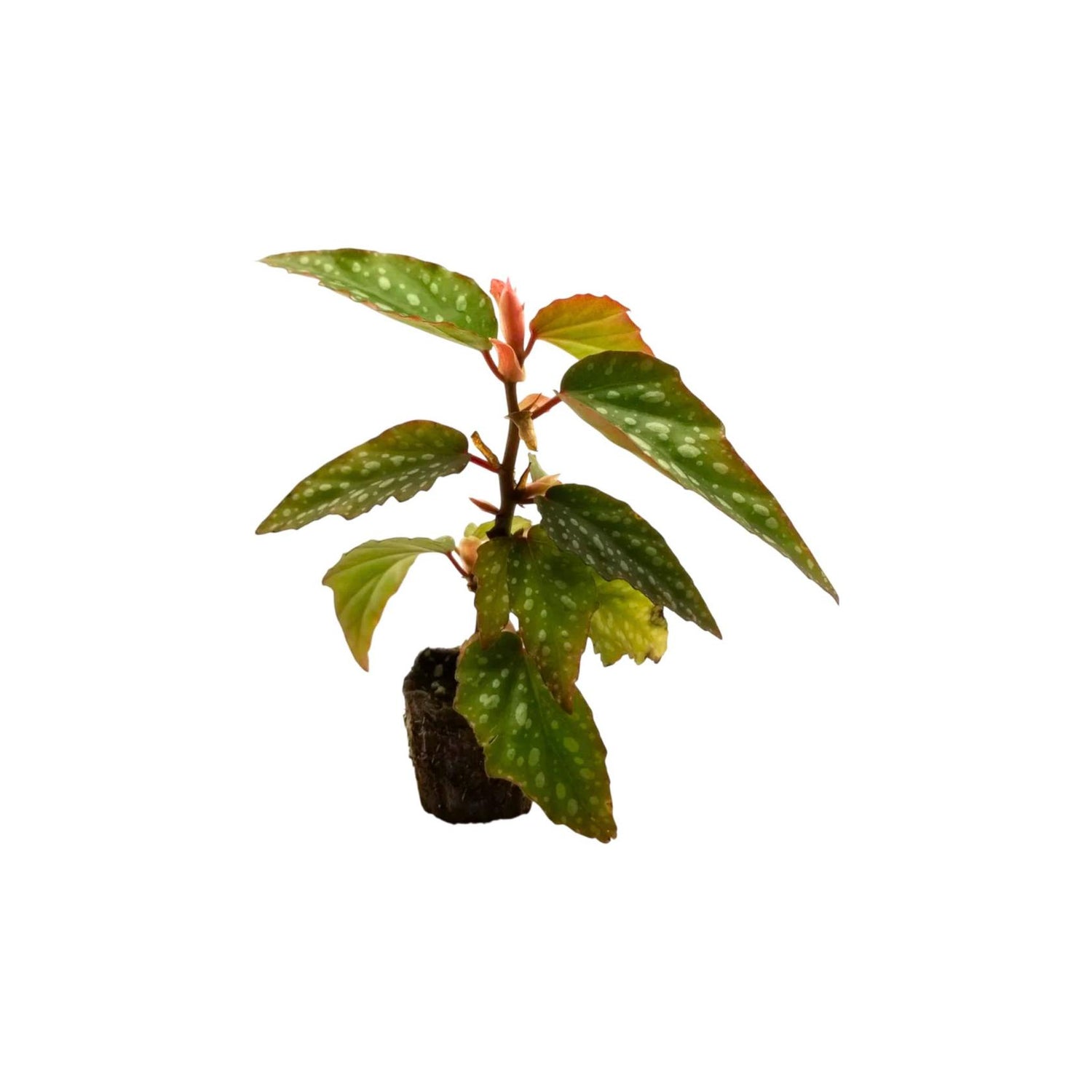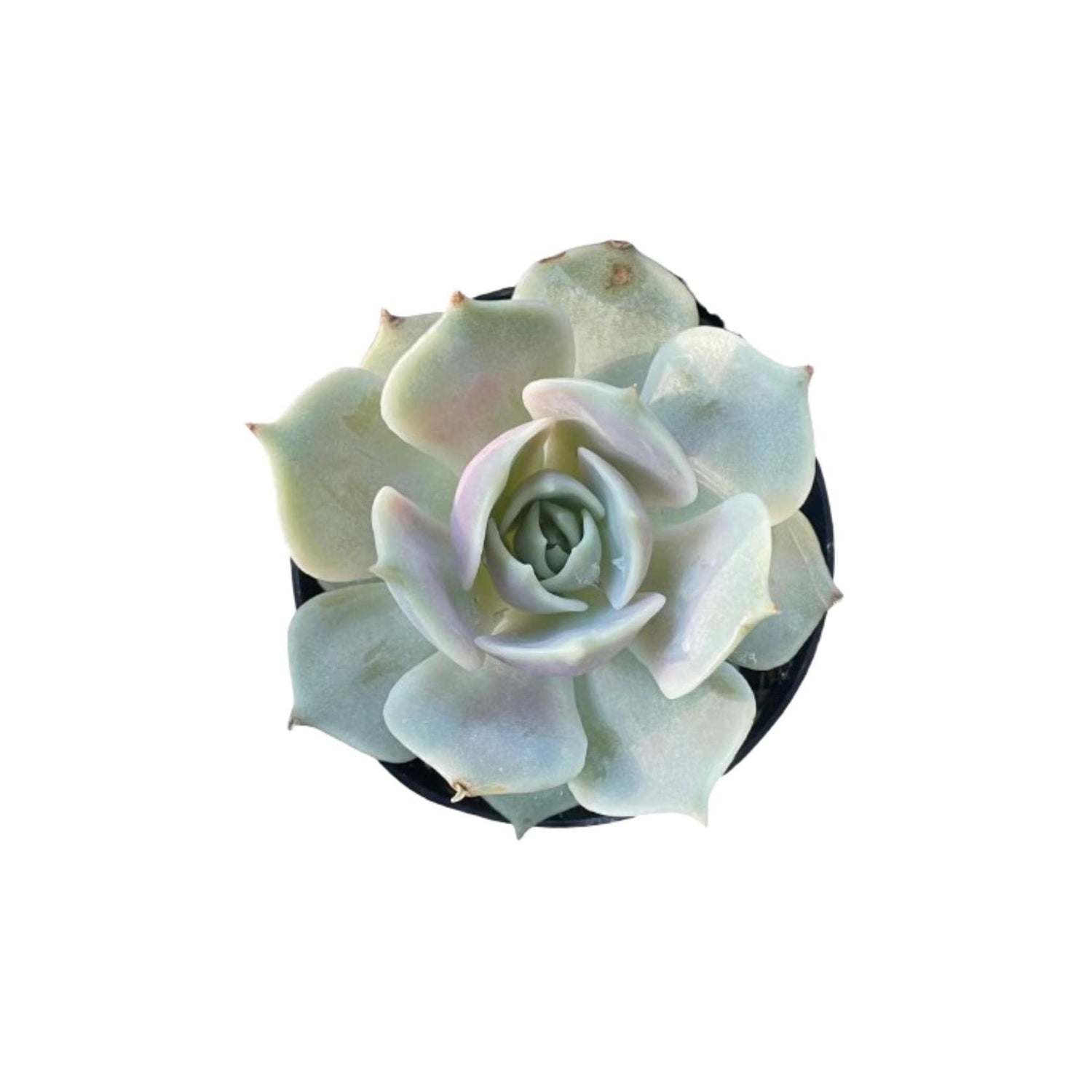Sort by:
71 products
71 products
The Angel Wing Begonia Sunbrite Red Rooted Starter Plant, a member of the Begoniaceae family, originates from the tropical climates of South America. This plug-rooted starter plant captivates with its asymmetrical, wing-shaped leaves speckled in silver and vibrant clusters of fiery red blooms that contrast elegantly against its deep green foliage. Thriving in bright, indirect light, it offers year-round color and texture for indoor spaces or shaded outdoor areas. Ideal for hardiness zones 10-11, this low-maintenance begonia flourishes for years with proper care, making it a standout choice for both novice and experienced gardeners.
Symbolizing passion and vitality, the Angel Wing Begonia Sunbrite Red adds bold energy to any decor. Note that it contains calcium oxalate crystals, which are toxic to pets and humans if ingested.
Angel Wing Begonia Sunbrite Red Rooted Starter Plant: Benefits
- Purifies indoor air by filtering pollutants like benzene and formaldehyde
- Boasts striking red blooms and metallic-speckled foliage for visual drama
- Thrives in humid environments, perfect for bathrooms or kitchens
- Compact, cascading growth is ideal for hanging planters or tabletops
- Attracts pollinators like hummingbirds when placed in shaded outdoor areas
- Low fertilizer needs due to efficient nutrient absorption
Angel Wing Begonia Sunbrite Red Care Guide
Renowned for its vibrant blooms and lush foliage, this rooted starter plant is easy to nurture with consistent care. Follow these guidelines for thriving growth.
Watering
Water when the top 1-2 inches of soil feel dry. Use filtered or rainwater to prevent leaf discoloration, and ensure pots have drainage holes to avoid root rot. Mist leaves weekly to maintain humidity.
Light
Prefers bright, indirect light (east or north-facing windows). Direct afternoon sun can fade blooms and scorch leaves. Use grow lights in low-light spaces to encourage flowering.
Temperature
Maintain temperatures between 65°F-75°F (18°C-24°C). Protect from drafts and sudden drops below 55°F (13°C).
Common Problems
- Leaf drop from overwatering or temperature fluctuations
- Powdery mildew in stagnant, humid air
- Faded blooms due to insufficient light
- Mealybugs or spider mites in dry conditions
- Brown leaf edges caused by tap water chemicals or low humidity
Best Locations & Uses
- Perfect for humid spaces like bathrooms, kitchens, or sunrooms
- Elevates desks, shelves, or windowsills as a vibrant centerpiece
- Ideal for shaded patios or balconies in warm climates (zones 10-11)
- Pairs beautifully with ferns or calatheas in mixed planters
- Safe for pet-free homes or displayed on high, out-of-reach surfaces
The Angel Wing Begonia Sunbrite Pink Rooted Starter Plant, part of the Begoniaceae family, hails from the tropical climates of South America. This plug-rooted starter plant dazzles with its asymmetrical, wing-shaped leaves adorned with silver speckles and vibrant clusters of pink blooms that contrast beautifully against its deep green foliage. Thriving in bright, indirect light, it’s a low-maintenance choice for adding year-round color to indoor spaces or shaded patios. Suitable for hardiness zones 10-11, this begonia can flourish for years with proper care, making it a favorite among both novice and seasoned gardeners.
Symbolizing joy and lively energy, the Angel Wing Begonia Sunbrite Pink is a striking decorative accent. Note that it contains calcium oxalate crystals, which are toxic to pets and humans if ingested.
Angel Wing Begonia Sunbrite Pink Rooted Starter Plant: Benefits
- Enhances indoor air quality by filtering pollutants like benzene and formaldehyde
- Adds vibrant color with eye-catching pink blooms and metallic-speckled foliage
- Thrives in humid environments, perfect for bathrooms or kitchen windowsills
- Compact, cascading growth is ideal for hanging baskets or tabletops
- Attracts pollinators like hummingbirds when placed outdoors in shaded areas
- Low fertilizer requirements due to efficient nutrient absorption
Angel Wing Begonia Sunbrite Pink Care Guide
Celebrated for its dazzling flowers and foliage, this rooted starter plant is easy to grow with a few simple care practices. Follow these guidelines for lush, healthy growth.
Watering
Water when the top 1-2 inches of soil feel dry. Use filtered or rainwater to prevent leaf spotting, and ensure pots have drainage holes to avoid root rot. Mist leaves weekly to maintain humidity.
Light
Prefers bright, indirect light (east or north-facing windows). Avoid direct afternoon sun, which can fade blooms and scorch leaves. Supplement with grow lights in low-light areas.
Temperature
Maintain temperatures between 65°F-75°F (18°C-24°C). Protect from drafts and sudden temperature drops below 55°F (13°C).
Common Problems
- Leaf drop from overwatering or abrupt temperature changes
- Powdery mildew in poorly ventilated, humid conditions
- Faded blooms due to insufficient light
- Mealybugs or spider mites in dry indoor environments
- Brown leaf edges caused by chlorine in tap water or low humidity
Best Locations & Uses
- Ideal for bright bathrooms, sunrooms, or kitchens with natural humidity
- Elevates desks, shelves, or mantels as a cheerful focal point
- Perfect for shaded outdoor patios or balconies in warm climates
- Stunning in mixed planters with complementary foliage like ferns or ivy
- Safe for pet-free homes or displayed on high, inaccessible ledges
The Echeveria Shaviana Rooted Starter Plant, also known as the “Mexican Hen,” is a beautifully ruffled succulent native to northeastern Mexico. This plug-rooted starter plant features soft, wavy-edged leaves in shades of silvery blue to lavender, often with pink tinges along the frilly margins. Belonging to the Crassulaceae family, Echeveria Shaviana forms low-growing rosettes and produces elegant pink or coral flowers on tall stems during the summer months. Adapted to USDA zones 9–11, it’s a favorite among collectors for its ornamental foliage and pastel hues, making it a graceful addition to indoor succulent gardens or warm-climate outdoor containers.
Non-toxic and visually appealing, the Echeveria Shaviana offers unique texture and charm while remaining easy to care for with the right lighting and minimal watering.
Echeveria Shaviana Rooted Starter Plant: Benefits
- Ruffled, pastel-toned leaves add elegance to succulent arrangements
- Thrives with minimal watering and is perfect for drought-tolerant landscapes
- Contributes to cleaner indoor air by absorbing pollutants
- Compact size is ideal for windowsills, desks, and decorative pots
- Produces showy summer blooms that attract butterflies and hummingbirds
- Pet-safe and child-friendly for peace of mind indoors
Echeveria Shaviana Care Guide
This delicate-looking but resilient plant thrives with simple care. Ideal for both succulent beginners and enthusiasts, it rewards with stunning foliage and summer flowers when grown in bright, dry conditions.
Watering
Water deeply, but only when the soil is dry to the touch. Avoid watering into the center of the rosette to prevent rot. In winter, reduce watering frequency to once every 3–4 weeks.
Light
Prefers bright, indirect to direct sunlight for 4–6 hours daily. Indoors, place near a sunny window. Outdoors, offer morning sun with afternoon shade to protect delicate leaves.
Temperature
Thrives in temperatures between 65°F–80°F (18°C–27°C). Not frost-tolerant and move indoors when temperatures dip below 40°F (4°C). Protect from extreme humidity and cold drafts.
Common Problems
- Leaf rot caused by overwatering or water trapped in the rosette
- Pale or stretched growth from inadequate light
- Mealybugs or aphids near leaf bases or flower stalks
- Dry, crispy leaves due to underwatering or sunburn
- Discoloration if exposed to sudden temperature changes
Best Locations & Uses
- Perfect for sunny indoor spots like windowsills or plant shelves
- Complements decorative containers in succulent arrangements
- Ideal for patios, balconies, and garden beds in warm climates
- Pairs well with other pastel-toned succulents in mixed displays
- Makes a beautiful, easy-care gift for plant lovers or beginners
The Echeveria Perle Von Nurnberg Rooted Starter Plant is a stunning succulent hybrid from the Crassulaceae family, prized for its sculptural rosette form and pastel-toned leaves. Native to semi-arid regions, this plug-rooted starter plant features fleshy, pointed leaves with soft lavender and silvery pink hues that deepen with sun exposure. Its powdery coating, known as farina, gives the plant a delicate, frosted appearance, making it a standout in both indoor arrangements and outdoor rock gardens. Hardy in USDA zones 9–11, it remains compact and elegant while occasionally producing coral-pink flower spikes during the growing season.
Non-toxic and pet-safe, the Echeveria Perle Von Nurnberg adds a calming presence to your home or garden, requiring minimal care and thriving in bright, dry conditions.
Echeveria Perle Von Nurnberg Rooted Starter Plant: Benefits
- Enhances décor with its elegant, sculptural rosette and soft pastel colors
- Drought-tolerant and low-maintenance, and ideal for busy or beginner plant owners
- Purifies indoor air by absorbing carbon dioxide and releasing oxygen
- Perfect for modern planters, succulent arrangements, or windowsill displays
- Produces eye-catching coral blooms on tall stems during spring and summer
- Non-toxic and safe for homes with pets or children
Echeveria Perle Von Nurnberg Care Guide
This rooted starter plant is an excellent choice for indoor container gardens or warm outdoor landscapes. It’s easy to care for when given proper sunlight and well-draining soil.
Watering
Allow the soil to dry completely between waterings. Water deeply, then let excess moisture drain fully. During the dormant winter months, reduce watering to once every 3–4 weeks.
Light
Requires bright, direct light for at least 6 hours per day. South-facing windows or outdoor spaces with full sun help maintain its vibrant coloration and compact growth.
Temperature
Prefers warm conditions between 65°F–80°F (18°C–27°C). Avoid frost exposure and protect from temperatures below 40°F (4°C). Bring indoors during cold seasons in cooler zones.
Common Problems
- Leaf rot from overwatering or poor drainage
- Stretched growth (etiolation) caused by insufficient sunlight
- Mealybugs or aphids on leaves or flower stems
- Wrinkled leaves as a sign of underwatering
- Loss of farina (leaf coating) if handled too frequently
Best Locations & Uses
- Perfect for sunny windowsills, kitchen counters, or office desks
- Thrives in decorative pots, succulent bowls, or xeriscape gardens
- Suitable for indoor plant shelves with strong natural light
- Great for patios, balconies, or garden beds in frost-free zones
- Ideal for gifting due to its low care needs and beautiful appearance
The Echeveria Setosa Arrow Rooted Starter Plant is a distinctive succulent native to Mexico, admired for its fuzzy, arrow-shaped leaves covered in fine white hairs. This plug-rooted starter plant from the Crassulaceae family forms compact, symmetrical rosettes in a soft green shade, giving it a velvety appearance and tactile charm. Its dense covering of trichomes helps the plant reflect intense sunlight and retain moisture, making it well-suited for warm, dry environments. In late spring to early summer, it produces eye-catching red and yellow bell-shaped flowers on slender stalks. Best suited for USDA zones 9–11, it’s an excellent addition to windowsills, succulent displays, or outdoor rock gardens in mild climates.
Pet-safe and resilient, the Echeveria Setosa Arrow offers a unique texture and visual contrast to mixed succulent arrangements, while remaining easy to maintain even for new plant owners.
Echeveria Setosa Arrow Rooted Starter Plant: Benefits
- Soft, fuzzy foliage adds texture and interest to any plant collection
- Thrives with minimal care and infrequent watering
- Air-purifying properties contribute to a healthier indoor environment
- Compact size fits well in small planters, terrariums, or garden edges
- Produces vibrant red-and-yellow flowers that attract pollinators
- Non-toxic and safe for homes with pets and children
Echeveria Setosa Arrow Care Guide
Adaptable and drought-tolerant, this succulent requires simple care and thrives with the right balance of light and well-draining soil. Ideal for both indoor containers and outdoor settings in mild zones.
Watering
Water sparingly, only when the soil is completely dry. Avoid letting water sit on the fuzzy leaves to prevent rot. During dormancy in cooler months, reduce watering to once a month or less.
Light
Prefers full sun to bright indirect light. Indoors, place near a south or west-facing window. Outdoors, select a spot with plenty of sunlight and good airflow to prevent fungal issues.
Temperature
Optimal temperatures range between 65°F–80°F (18°C–27°C). Not frost-tolerant, bring indoors if temperatures fall below 40°F (4°C). Protect from cold drafts and excessive humidity.
Common Problems
- Overwatering leading to root or crown rot
- Stretching or leggy growth from insufficient sunlight
- Pest infestations like aphids or mealybugs on flower stalks
- Spotted leaves if water sits on foliage
- Leaf drop due to sudden temperature changes or poor drainage
Best Locations & Uses
- Excellent for sunny windowsills, shelves, or office desktops
- Great in mixed succulent arrangements or small patio containers
- Well-suited to rock gardens, xeriscaping, or balcony planters
- Complements minimalist décor and indoor plant groupings
- Perfect as a low-maintenance gift for succulent enthusiasts
The Echeveria Lilacina Rooted Starter Plant, a serene member of the Crassulaceae family, originates from the rocky outcrops of Nuevo León, Mexico. Often called the "Ghost Echeveria," this plug-rooted succulent forms elegant, symmetrical rosettes of powdery lilac-gray leaves with delicate pink edges under bright sunlight. Reaching 6-10 inches in diameter, its drought-tolerant form thrives in containers, rockeries, or sunny indoor spaces. Hardy in zones 9-11, this slow-growing beauty sends up arching flower stalks with coral-pink bell-shaped blooms in late winter to early spring. Safe for homes with pets and children, its ethereal coloring adds calming sophistication to any décor.
Echeveria Lilacina Rooted Starter Plant: Benefits
- Drought-resistant and ideal for water-wise gardens or low-maintenance indoor displays
- Natural farina coating protects against sun exposure and conserves moisture
- Adds soft, cool-toned contrast to succulent arrangements or moon gardens
- Non-toxic and pet-friendly, perfect for households with curious pets
- Thrives in shallow pots, hypertufa planters, or vertical succulent walls
- Produces offsets for easy propagation, creating future generations of plants
Echeveria Lilacina Care Guide
Celebrated for its tranquil beauty and resilience, this starter plant thrives with straightforward care. Follow these guidelines for optimal growth.
Watering
Water deeply only when the soil is completely dry (every 3-4 weeks in summer, sparingly in winter). Use the "soak and dry" method, ensuring thorough drainage. Avoid splashing leaves to preserve their protective farina coating.
Light
Requires 6+ hours of direct sunlight daily for compact growth and pink edging. South-facing windows or open gardens are ideal. Acclimate gradually to outdoor sun in spring. Provide light shade in temperatures above 95°F (35°C).
Temperature
Prefers 50°F-80°F (10°C-27°C). Tolerates brief frosts down to 25°F (-4°C) if kept dry. Protect from prolonged humidity and freezing conditions.
Common Problems
- Farina damage from handling or water droplets
- Root rot caused by overwatering or dense soils
- Mealybugs nesting in leaf crevices and treated with 70% isopropyl alcohol
- Etiolation (stretching) in low-light environments
- Sunburn from abrupt exposure to intense midday sun
Best Locations & Uses
- Creates serene focal points in minimalist living rooms or sunlit bedrooms
- Thrives in rock gardens, gravel pathways, or drought-tolerant landscapes
- Pairs elegantly with blue chalk sticks or lavender for cool-toned themes
- Ideal for fairy gardens or succulent wreaths due to its compact growth
- Perfect for sunny bathroom windowsills with occasional humidity
The Echeveria Diffractens Rooted Starter Plant, a captivating member of the Crassulaceae family, originates from the sun-drenched rocky slopes of Mexico. This plug-rooted succulent features intricate rosettes with ruffled, blue-green leaves that develop pink-edged tips under bright light, resembling a living floral sculpture. Reaching 4-6 inches in diameter, its compact form thrives in containers, rock gardens, or terrariums. Hardy in zones 9-11, this drought-tolerant gem flourishes with minimal care, producing arching flower stalks topped with coral-pink blooms in late spring. Safe for homes with pets, its geometric beauty adds elegance to any space.
Echeveria Diffractens Rooted Starter Plant: Benefits
- Drought-resistant, and ideal for water-wise landscapes or forgetful waterers
- Creates striking contrast in succulent arrangements or fairy gardens
- Produces showy, bell-shaped flowers that attract hummingbirds outdoors
- Non-toxic and pet-friendly, perfect for households with curious animals
- Slow-growing nature maintains tidy proportions for small spaces
- Thrives in shallow pots, making it ideal for vertical gardens or wall planters
Echeveria Diffractens Care Guide
Renowned for its sculptural form and resilience, this starter plant thrives with straightforward care. Follow these guidelines for vibrant growth.
Watering
Water only when soil is completely dry (every 3-4 weeks in summer, less in winter). Use the "soak and dry" method, saturating soil until water drains freely. Avoid water pooling in the rosette to prevent rot.
Light
Requires 6-8 hours of bright, direct sunlight daily for tight rosettes and stress colors. South-facing windows are ideal indoors. Acclimate gradually to outdoor sun in spring. Provide light afternoon shade in extreme heat.
Temperature
Prefers 60°F-85°F (16°C-29°C). Tolerates brief dips to 25°F (-4°C) if kept dry. Protect from frost and prolonged humidity above 60%.
Common Problems
- Leaf drop from overwatering or poor drainage
- Etiolation (stretching) in low-light conditions
- Aphids or mealybugs targeting new growth
- Sunburn from sudden exposure to intense midday sun
- White powdery residue from mineral deposits in hard water
Best Locations & Uses
- Elevates modern desk setups or sunny kitchen windowsills
- Creates texture in xeriscape borders or gravel pathways
- Thrives in hypertufa troughs or rustic clay pots
- Adds architectural interest to succulent wedding favors
- Perfect for coastal gardens with sandy, well-draining soil
The Echeveria Frosty Rooted Starter Plant, part of the Crassulaceae family, hails from the sun-baked highlands of Mexico. This plug-rooted succulent forms a symmetrical rosette of thick, powdery blue-green leaves dusted with a delicate "frosted" white coating (farina), edged in soft pink under bright light. Reaching 5-7 inches in diameter, its compact, drought-tolerant form thrives in containers, rock gardens, or sunny windowsills. Hardy in zones 9-11, this low-maintenance beauty produces coral-orange bell-shaped flowers on arching stalks in late spring. Safe for homes with pets, its ethereal coloration adds year-round elegance to any setting.
Echeveria Frosty Rooted Starter Plant: Benefits
- Exceptional drought tolerance, perfect for xeriscaping or busy lifestyles
- Natural farina coating protects against sunburn and moisture loss
- Adds cool-toned contrast to succulent arrangements or modern décor
- Non-toxic and pet-safe, ideal for homes with curious cats or dogs
- Thrives in shallow pots, perfect for living wreaths or vertical gardens
- Cold-hardier than most succulents, tolerates brief frosts when dry
Echeveria Frosty Care Guide
Celebrated for its serene beauty and resilience, this starter plant flourishes with minimal care. Follow these guidelines for optimal growth.
Watering
Water only when the soil is completely dry (every 3-4 weeks in summer, sparingly in winter). Use the "soak and dry" method, drenching soil until water drains freely. Avoid wetting leaves to preserve protective farina.
Light
Requires 6+ hours of direct sunlight daily for compact growth and pink edging. South or west-facing windows are ideal indoors. Acclimate gradually to outdoor sun in spring. Provide light shade in temperatures above 95°F (35°C).
Temperature
Prefers 50°F-85°F (10°C-29°C). Tolerates brief dips to 25°F (-4°C) if kept dry. Protect from prolonged frost and high humidity.
Common Problems
- Farina damage from touching or water splashes
- Root rot due to overwatering or organic-rich soils
- Mealybugs hiding in leaf crevices are treated with neem oil
- Etiolation (stretching) in insufficient light
- Sunburn from sudden exposure to intense midday sun
Best Locations & Uses
- Creates serene focal points in minimalist office spaces or sunrooms
- Thrives in rock gardens, gravel beds, or dry-stack stone walls
- Ideal for moon gardens with its cool, frosted appearance
- Pairs elegantly with lavender or silver-leaved drought-tolerant plants
- Perfect for DIY succulent weddingscapes or table centerpieces
The Echeveria Chroma Rooted Starter Plant, a member of the Crassulaceae family, originates from the arid highlands of Mexico. This plug-rooted succulent showcases a stunning rosette form with fleshy, spoon-shaped leaves that transition through hues of pink, orange, lavender, and blue-green depending on sunlight exposure. Perfect for both indoor and outdoor settings, this drought-tolerant beauty thrives in bright light and well-draining soil, reaching 6-8 inches in diameter. Hardy in zones 9-11, it’s an excellent choice for rock gardens, container arrangements, or sunny windowsills. Safe for homes with pets, its ever-changing colors provide year-round visual interest.
Echeveria Chroma Rooted Starter Plant: Benefits
- Drought-resistant and ideal for water-wise gardens or busy plant owners.
- Adds vibrant, color-shifting focal points to succulent arrangements or terrariums.
- Produces tall flower stalks with coral blooms in spring/summer, attracting pollinators.
- Compact size suits small spaces, fairy gardens, or office desks.
- Non-toxic and safe for homes with pets or children.
- Easy to propagate from offsets for endless DIY gardening projects.
Echeveria Chroma Care Guide
Known for its resilience and striking colors, this rooted starter plant thrives with minimal intervention. Follow these guidelines for healthy growth.
Watering
Water deeply only when the soil is completely dry (every 2-3 weeks in summer, monthly in winter). Use the "soak and dry" method, ensuring excess water drains fully. Avoid wetting the rosette to prevent rot.
Light
Requires 6+ hours of bright, direct sunlight daily for intense coloration. East or south-facing windows are ideal indoors. Acclimate gradually to outdoor sun in spring. In extreme heat, provide afternoon shade.
Temperature
Prefers 65°F-80°F (18°C-27°C). Tolerates brief frosts down to 20°F (-6°C) when dry. Protect from prolonged freezing temperatures and heavy rain.
Common Problems
- Root rot from overwatering or poorly draining soil.
- Etiolation (stretching) in low-light conditions.
- Mealybugs hiding in leaf crevices are treated with 70% isopropyl alcohol.
- Sunburn from sudden exposure to intense midday rays.
- Leaf discoloration due to mineral-heavy tap water.
Best Locations & Uses
- Creates living art in rock gardens, xeriscapes, or stone pathways.
- Thrives in shallow pots or hypertufa planters for tabletop displays.
- Adds texture to wedding centerpieces or succulent wreaths.
- Perfect for sunny bathroom windowsills with occasional humidity.
- Ideal for beginner gardeners or urban balconies with full sun.
The Angel Wing Begonia Medora Rooted Starter Plant, a member of the Begoniaceae family, hails from South America’s tropical climates. This plug-rooted starter showcases dramatic, asymmetrical leaves resembling angel wings, adorned with silver polka dots and deep red undersides. Perfect for indoor displays or shaded outdoor areas, it thrives in bright, indirect light and requires minimal upkeep. Suited for hardiness zones 10-11, this plant offers year-round visual appeal and occasional clusters of pink or red blooms when cared for properly. Its compact size makes it ideal for tabletops, terrariums, or hanging baskets.
Symbolizing harmony and creativity, this begonia adds a tropical flair to any space. Note: Contains calcium oxalate crystals, toxic if ingested by pets or humans.
Angel Wing Begonia Medora Rooted Starter Plant: Benefits
- Enhances indoor air quality by absorbing airborne toxins like benzene
- Adds striking texture to plant collections with metallic-spotted foliage
- Adapts well to high-humidity areas like bathrooms or kitchens
- Compact growth (12-18 inches tall) fits small spaces and urban gardens
- Produces delicate flowers in summer under optimal light conditions
- Drought-tolerant once established, reducing watering frequency
Angel Wing Begonia Medora Care Guide
This low-fuss tropical plant rewards growers with vibrant foliage when given proper care. Follow these guidelines to ensure healthy growth.
Watering
Water every 7-10 days when the topsoil feels dry. Use distilled or rainwater to prevent leaf tip browning. Reduce watering frequency in winter by 30-40%.
Light
Prefers 4-6 hours of bright, filtered light daily. East-facing windows are ideal. Rotate the plant monthly for even growth. Supplemental grow lights work well in darker spaces.
Temperature
Keep between 60°F-80°F (15°C-27°C). Avoid sudden temperature drops below 55°F (13°C) or cold drafts from windows/AC units.
Common Problems
- Yellowing leaves from overwatering or poor drainage
- Leaf scorch marks from direct sunlight exposure
- Stunted growth due to compacted soil or low humidity
- Aphid infestations on new growth during dry spells
- Root rot from standing water in saucers
Best Locations & Uses
- Brightens shaded office corners or north-facing windowsills
- Creates lush accents in humidity-rich terrariums or sunrooms
- Pairs beautifully with peperomia or prayer plants in mixed displays
- Safely elevates home decor on high shelves or plant stands
- Adds vertical interest in warm-climate shade gardens (zones 10-11)
The Echeveria Lola Rooted Starter Plant, a charming hybrid from the Crassulaceae family, combines the best traits of its Mexican succulent ancestors. This plug-rooted beauty forms tight, rose-like rosettes with fleshy, lavender-gray leaves that blush soft pink at the edges under bright light. Reaching 4-6 inches in diameter, its compact form thrives in containers, terrariums, or rock gardens. Hardy in zones 9-11, this drought-tolerant succulent sends up slender stalks adorned with coral-pink bell-shaped flowers in spring. Safe for homes with pets and children, its pastel hues add delicate elegance to sunny windowsills or outdoor xeriscapes.
Echeveria Lola Rooted Starter Plant: Benefits
- Drought-resistant and perfect for water-wise gardens or forgetful plant owners
- Compact size suits small spaces, fairy gardens, or office desks
- Non-toxic and pet-friendly, ideal for households with curious pets
- Color-shifting leaves create seasonal interest without flowers
- Thrives in shallow pots, vertical gardens, or living wall art
- Produces offsets for easy propagation and cost-effective displays
Echeveria Lola Rooted Starter Plant Care Guide
Renowned for its sculptural beauty and low-maintenance needs, this starter plant thrives with minimal care. Follow these guidelines for vibrant growth.
Watering
Water deeply only when the soil is completely dry (every 3-4 weeks in summer, monthly in winter). Use the "soak and dry" method, ensuring excess water drains fully. Avoid wetting the rosette to prevent rot.
Light
Requires 6+ hours of bright, direct sunlight daily for compact growth and pink accents. South or west-facing windows are ideal indoors. Acclimate gradually to outdoor sun. Provide light afternoon shade in extreme heat (above 90°F/32°C).
Temperature
Prefers 60°F-80°F (16°C-27°C). Tolerates brief dips to 25°F (-4°C) if kept dry. Protect from frost and prolonged humidity above 60%.
Common Problems
- Root rot from overwatering or poorly draining soil
- Etiolation (stretching) in low-light conditions
- Mealybugs hiding in leaf crevices are treated with neem oil
- Sunburn from sudden exposure to intense midday rays
- Faded colors due to insufficient sunlight
Best Locations & Uses
- Brightens sunny kitchen windowsills or office desks
- Creates serene accents in rock gardens or gravel pathways
- Thrives in succulent bowls paired with sedums or graptopetalums
- Ideal for wedding centerpieces or living party favors
- Elevates minimalist décor in modern apartments or studios

